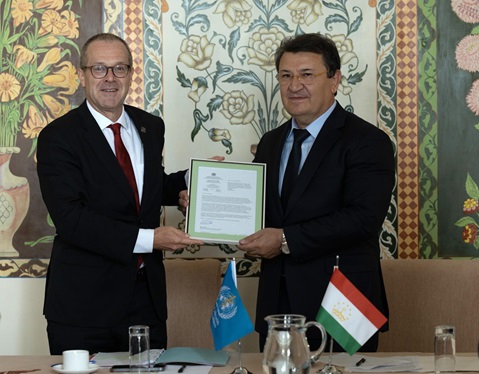In September 2023, the State Institution "National Reference Laboratory" (NRL) of the Ministry of Health and Social Protection of the Population of the Republic of Tajikistan (MoHSP) was recognized by WHO as a National Influenza Center (NIC). The recognition followed a period of dedicated support from the WHO Regional Office for Europe to the NRL through trainings, international mentoring and technical assessments – all supported by the Pandemic Influenza Preparedness (PIP) Framework Partnership Contribution (PC). As the 153rd NIC to be recognized, this represents the further expansion of the Global Influenza Surveillance and Response System (GISRS).

The pathway to recognition
Since 2014, Tajikistan has been participating in the GISRS network by reporting epidemiological and virological data to regional and global influenza surveillance platforms, and sharing influenza samples with WHO Collaborating Centres (WHO CC) for genetic and antigenic characterization.
In recent years, the support provided by the Regional Office and the WHO Country Office in Tajikistan, as part of the implementation of the PIP PC, has been intensified in with the aim of Tajikistan obtaining NIC recognition. In January 2022, four senior virologists from NRL were trained in contemporary molecular detection and identification methods for influenza and SARS-CoV-2 viruses. Since then, the laboratory has consistently participated and scored highly in the WHO External Quality Assessment Programme.
To support the laboratory’s efforts to bridge existing gaps identified through an initial technical assessment in 2022, WHO arranged for a 6-month international mentorship programme through which the NRL was supported by experts from a more established NIC. After a follow-up assessment was conducted in 2023, the laboratory saw a marked increase in their overall performance score from 84% to 96% - demonstrating full readiness for the recognition as a NIC.
In addition to its diagnostic capacities, the NRL implemented a quality management system which included procedures for the processing and adequate storage of clinical specimens, while complying with core biosafety requirements. It was also set up to receive clinical specimens from sentinel surveillance sites, and outbreaks and non-sentinel sources. Now, they are in the process of implementing advanced diagnostic techniques, including for next-generation sequencing.
Strengthening international collaboration
As a result of these joint efforts, the NIC is now well placed to detect, characterize, assess risk, and share seasonal and zoonotic influenza viruses – core functions within the GISRS network. During the recognition ceremony, the WHO Regional Director for Europe, Dr Hans Kluge, presented the official NIC recognition letter to the Minister of Health and Social Protection of Tajikistan, His Excellency Dr Abdullozoda Jamoliddin Abdullo, with the Minister acknowledging that ”All these achievements are thanks to collaboration with WHO and with the technical support and assistance of WHO”
